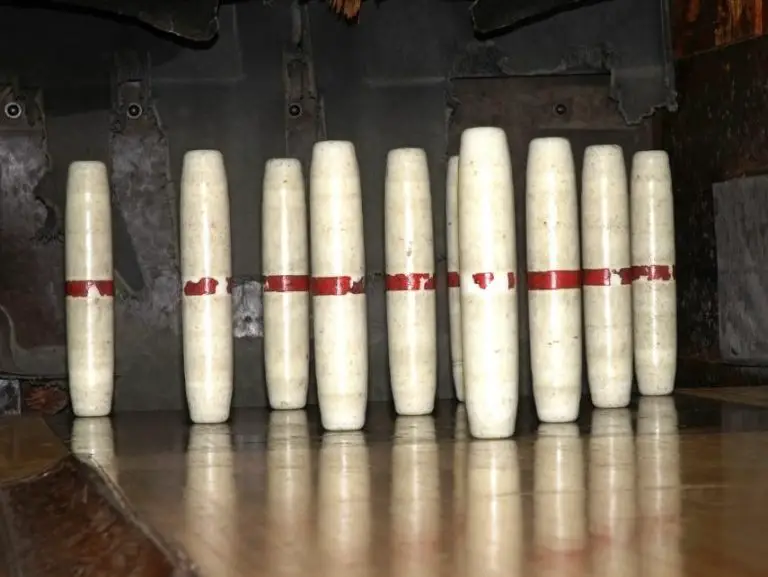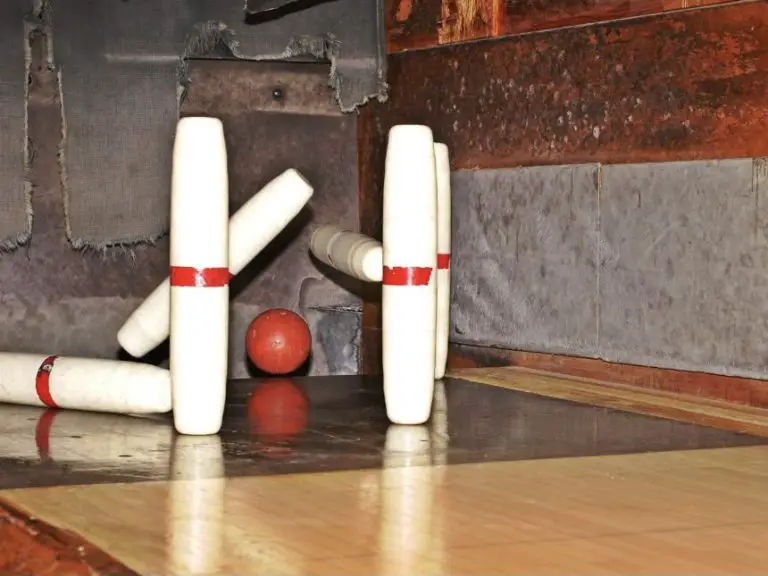Candlepin Bowling: An Overview
Overview of Candlepin Bowling
If you’re looking for a unique bowling experience, you might want to try candlepin bowling. It’s a sport that originated in Worcester, Massachusetts in the 1880s and is still popular in New England today. Candlepin bowling is a game that uses different shaped pins and smaller balls than traditional ten-pin bowling.
The objective of candlepin bowling is to knock down as many pins as possible. You’ll gain points based on the number of pins knocked down. The game is played in ten frames, and each frame consists of three rolls. Unlike ten-pin bowling, the pins in candlepin bowling are not cleared between rolls. Fallen pins or “deadwood” are not removed during a frame between rolls.
Candlepin bowling is a challenging game that requires skill, strategy, and precision. The pins are tall and thin, looking like candlesticks, which makes it more difficult to knock them down. The balls used in candlepin bowling are smaller and lighter than those used in ten-pin bowling, making it harder to generate the same amount of power.
Candlepin bowling is a fun and social activity that can be enjoyed by people of all ages. It’s a great way to spend time with friends and family, and it’s also a competitive sport that can be played at a high level. If you’re in New England, you can find candlepin bowling alleys in Massachusetts, New Hampshire, Maine, and even in parts of Canada like Nova Scotia and New Brunswick.
Playing the Game
Candlepin bowling is a unique variation of bowling that requires different techniques and strategies compared to other types of bowling. Here are some important things to keep in mind when playing the game.
Rules and Scoring
Candlepin bowling is played with a handheld-sized ball and tall, narrow pins that resemble candles, hence the name. The objective of the game is to knock down as many pins as possible in each frame. There are ten frames in a game, and each frame consists of up to three rolls.
The score is calculated based on the number of pins knocked down in each frame. A strike is when all the pins are knocked down with the first ball, and a spare is when all the pins are knocked down with the second ball.
Getting a “derby” means it took 3 rolls to knock all pins down. You are scored an open frame if you knock down less than 10 pins in 3 rolls.
For each strike, you will add the total pins knocked down in the next 2 rolls to that frame’s score. With a spare, you add the just the next roll score. Open frames and derbys only score the number of pins knocked down, and you start the next frame without any bonus available.
Techniques and Strategies
When playing candlepin bowling, it is important to focus on your technique and aim. The approach is the area where you start your shot, and it is important to have a consistent approach every time you bowl. You should also pay attention to the foul line, which is the line that separates the approach from the lane. If you cross the foul line, it is considered a foul and your shot will not count.
Candlepin bowlers typically throw straight balls, not curves or hook shots. You should aim for the one side of the headpin to knock down as many pins as possible. The pins are placed in the same positions as in 10-pin bowling.
You will obviously want to knock down as many pins as possible with your first shot, and then adjust your aim for the second and third shots if necessary. It is also important to avoid the gutters, which are the channels on either side of the lane. If the ball goes into the gutters, it will not knock down any pins.
Equipment and Lane Specifications
Candlepin Bowling Balls
Candlepin bowling balls are smaller than traditional bowling balls used in ten-pin bowling. They are handheld-sized and have a diameter of approximately 4.5 inches. The weight of the ball is usually between 2 and 3 pounds, making it easier to hold and throw. The ball is designed to fit comfortably in your hand, and it has no finger holes like in ten-pin bowling balls.
Candlepin bowling balls can be made of different materials such as wood, plastic, or rubber. Each material has its advantages and disadvantages. Wooden balls are the original type of candlepin bowling balls and are still used today.
They are durable and provide a good grip, but they can be affected by humidity and temperature changes. Plastic and rubber balls are more modern and are more resistant to changes in temperature and humidity. They also provide more consistency in ball performance.
The Bowling Lane
The bowling lane in candlepin bowling is similar to the lane in ten-pin bowling. The lane is 60 feet long and 3.5 feet wide. The lane is made of wood and is coated with a layer of oil to allow the ball to roll smoothly. The oil pattern on the lane can affect how the ball rolls, and different patterns can be used to create different challenges for the bowlers.
The bowling lane has gutters on either side that lead to the ball return. The ball return is a mechanical system that returns the ball to the bowler after it has been thrown. The ball return is located in a pit at the end of the lane, where the pins are set up. The pit is also coated with oil to allow the pins to slide smoothly.
Historical and Regional Significance
This unique variation of bowling is primarily played in the New England region of the United States and the Canadian Maritime provinces. Candlepin bowling has a rich history that dates back to the late 1800s and has become an important part of the cultural fabric of the region.
The roots of candlepin bowling can be traced back to Worcester, Massachusetts, where Justin White is credited with inventing the game in 1880. The game quickly gained popularity, and in 1906, the National Duckpin and Candlepin Congress was created to regulate the sport. Today, the International Candlepin Bowling Association (ICBA) oversees the sport, and there is even a Candlepin Bowling Hall of Fame in Massachusetts.
Candlepin bowling has a unique set of rules and equipment. The pins are tall and narrow, resembling candles, which is where the game gets its name. The balls used in candlepin bowling are small and handheld, making it a challenging game that requires precision and skill. Unlike traditional bowling, each player gets three rolls per frame instead of two, and the pins are not cleared between rolls.
Candlepin bowling has become an integral part of the New England region’s culture, with many local alleys offering the game. The sport has a dedicated following, with many leagues and tournaments held throughout the year. Whether you are a seasoned bowler or just looking for a fun new activity to try, candlepin bowling is a unique and exciting game that is worth checking out.
Competitive Candlepin Bowling
If you’re looking to take your candlepin bowling skills to the next level, there are plenty of leagues and tournaments available to compete in.
Leagues and Tournaments
The International Candlepin Bowling Association (ICBA) hosts several tournaments throughout the year, including the World Candlepin Bowling Championships. Many local bowling alleys also offer leagues for both casual and competitive players. Joining a league can be a great way to meet other bowlers and improve your game.
Professional Players and Records
Candlepin bowling has its fair share of professional players and high scores. The highest recorded score in a single game is 245, achieved by Ralph Semb in 1984. The highest recorded three-game series is 445, achieved by Chris Sargent in 2012.
The New Hampshire Candlepin Bowling Association (NHCBA) is one of the largest candlepin bowling organizations in the world and hosts several tournaments throughout the year. Many professional players have come out of New Hampshire, including Chris Sargent, who holds the record for the highest three-game series.
Overall, competitive candlepin bowling can be a fun and challenging way to improve your skills and meet other bowlers. Whether you’re playing in a local league or competing in a national tournament, there’s always room to improve and set new records.



